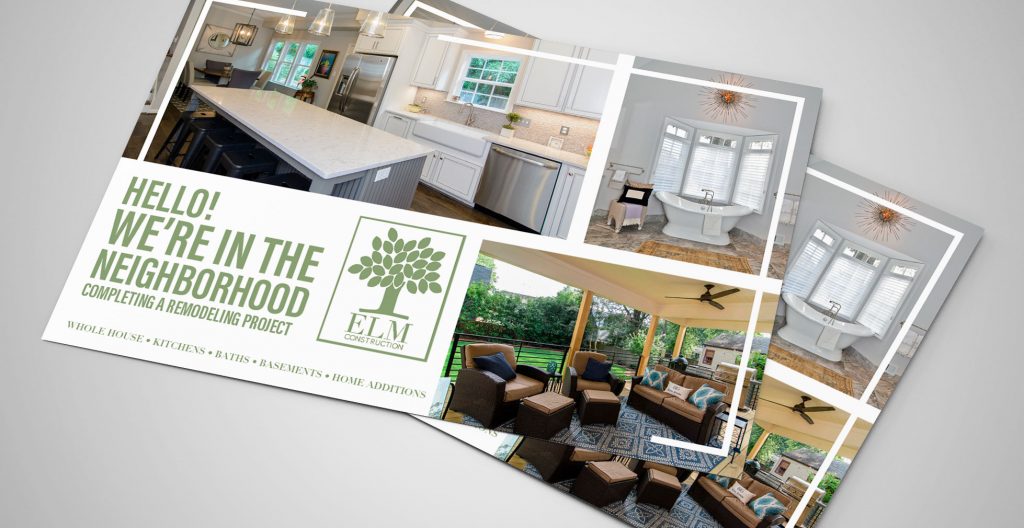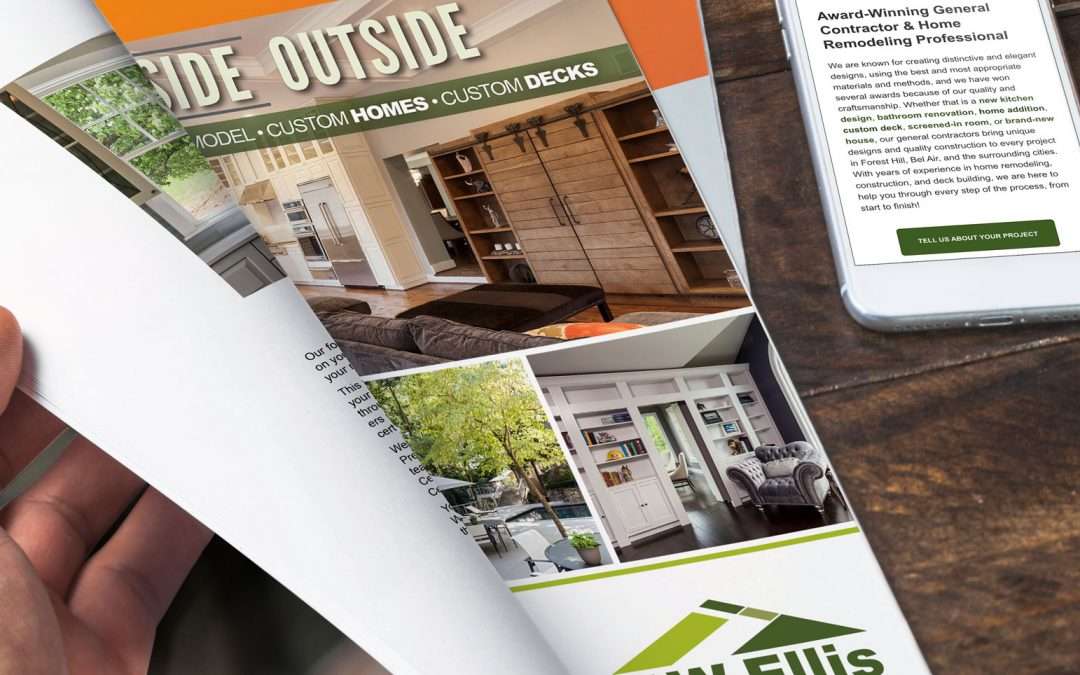Print marketing tends to get the short shrift these days. “Print is dead” is a common refrain.
We’ve explored before why that’s false, but the short version is the data shows print marketing can still deliver big results.
Read more: Why Direct Mail Still Works
The mistake too many remodelers do make is not making the most of their print marketing. Print and digital marketing shouldn’t be looked at as separate warring parts of your marketing strategy. The most effective results come when you integrate your print and digital marketing. According to research from Pitney Bowes, integrating print and digital marketing results in a 76 percent higher response rate.
Here are five tips on ways your offline marketing and digital marketing can support each other.
1. See what works
You can adjust and measure your digital content more easily than print.
While homeowners consume print and digital differently, your digital content can help you figure out the type of information your customers want to see. If, for example, blogs about kitchen trends do better than those on outdoor living projects, the same will probably hold true for a print newsletter.
This allows you to target your direct mail and other print marketing in a way you could never do by itself.
By having a call to action and benefit on all print pieces, you can capture a lot more information about your potential clients. That direct mail postcard that offers an exclusive remodeling guide or special deal can be a great motivator to scan the QR code or visit the targeted URL. A side benefit is that it allows you great data for tracking the effectiveness of your print marketing.
3. Leverage social media
The odds of someone stumbling onto your blog or Facebook page are fairly low. On the other hand, you can drastically increase those odds by making sure your social media handles, hashtags and URLs are everywhere you can out them, from brochures to door magnets to business cards.
If you have positive reviews and comments from social media, Google, Houzz, etc., add those to printed pieces.

4. Variable printing
Variable printing is the use of data and specialized technology to personalize printed pieces. This can be as simple as adding a name to the piece, but the real power is in changing up the message – text, photos, headlines – the possibilities are nearly unlimited. It’s similar to the way we can use the website to send someone personalized email content. Variable printing allows the same personalization in print form. If a customer has expressed interest in kitchens, their mailing includes photos of beautiful kitchens or a deal on cabinets.
5. Be consistent
It’s important to have consistency across all marketing channels. When you have a cohesive message across all channels, the marketing message is going to resonate better. Logos and design should be consistent everywhere, whether it’s the side of a truck or an Instagram post. The message should complement each other, too. If your goal is to be seen as a kitchen expert, keep to that theme. Avoid using different slogans or anything else that confuses the brand message.
We want to help you be successful, in whatever way we can. If you would like to discuss offline marketing, online marketing, or a combination, contact us at 828-328-8956 or online here.
2. QR codes/Targeted URLs
QR codes exploded onto the scene a decade ago, then flared out as users got tired of having to use a special app to scan them. We’re now seeing a resurgence in the supposedly dead QR code with most smartphones having native readers in their camera app.
But rather than just direct potential clients to a static website, we should be creative in how we use them. Have an article about a whole house remodel? Link to a virtual reality walkthrough of the home or video interview with the homeowner.
By having a call to action and benefit on all print pieces, you can capture a lot more information about your potential clients. That direct mail postcard that offers an exclusive remodeling guide or special deal can be a great motivator to scan the QR code or visit the targeted URL. A side benefit is that it allows you great data for tracking the effectiveness of your print marketing.
3. Leverage social media
The odds of someone stumbling onto your blog or Facebook page are fairly low. On the other hand, you can drastically increase those odds by making sure your social media handles, hashtags and URLs are everywhere you can out them, from brochures to door magnets to business cards.
If you have positive reviews and comments from social media, Google, Houzz, etc., add those to printed pieces.



4. Variable printing
Variable printing is the use of data and specialized technology to personalize printed pieces. This can be as simple as adding a name to the piece, but the real power is in changing up the message – text, photos, headlines – the possibilities are nearly unlimited. It’s similar to the way we can use the website to send someone personalized email content. Variable printing allows the same personalization in print form. If a customer has expressed interest in kitchens, their mailing includes photos of beautiful kitchens or a deal on cabinets.
5. Be consistent
It’s important to have consistency across all marketing channels. When you have a cohesive message across all channels, the marketing message is going to resonate better. Logos and design should be consistent everywhere, whether it’s the side of a truck or an Instagram post. The message should complement each other, too. If your goal is to be seen as a kitchen expert, keep to that theme. Avoid using different slogans or anything else that confuses the brand message.
We want to help you be successful, in whatever way we can. If you would like to discuss offline marketing, online marketing, or a combination, contact us at 828-328-8956 or online here.

